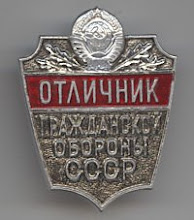Will it be an unparalleled ecological disaster zone? A latter-day Eden enabled by the lack of human inhabitation? The world's biggest time capsule? A toybox of wonderful Soviet things?
Now that I'm back in Moscow and have had some time to digest, I think I can issue some kind of statement on these questions.
Was Chernobyl an unprecedented ecological disaster zone? Definitely not. The radiation levels in the vast majority of the exclusion zone are now quite low--so much so, that our guide, Maxim, told us that he expects that the 30km zone will be opened up within another few years and that only the 10km zone will remain. There are, however, some significant hot spots in the 10km zone. The hottest place we ever got to in Pripiat was .25 rem/hr; but that was highly unusual. I think the usual level is a millirem/hr or less. Even in places near the sarcophagus it's many orders of magnitude lower than that. For instance, at the place I'm standing in this picture the ambient exposure is 2 millirem/hr:

However, according to a map we saw in the plant, the roof and part of the grounds on one side of the sarcophagus have exposure levels of up to 1.5 rem/hr. While that would take quite awhile to kill you outright, it's a serious workplace hazard and must make the life of the Novarka employees who are building the new sarcophagus very interesting...
Despite these isolated locations, the overall radiation hazard in the vast majority of the zone is nothing to get worked up about, in my view.
Was the zone a latter-day Eden enabled by the lack of human inhabitation? This I don't feel I can answer definitively. During my time in the zone I spent most of my time either in Pripiat or at the plant itself. Maxim told us that they had started shooting the wild boars once they began infringing on Chernobyl too much (the town the plant was named after and where the hotel is). Flies, midges, and mosquitoes were certainly in evidence; I'd have to spend time in other parts of the zone to determine if the wildlife lives up to the stories about it. Pripiat sees a lot of traffic, considering; there is a lost of post-1986 litter lying around, and at least several busloads of people come through every day.
Was it the world's biggest time capsule? Certainly less so than I would've liked. Thieves and scavengers (and I imagine simple vandals) have stolen or wrecked more or less everything that was worth taking. For instance, they stole the refrigerators from the top floor of a 16-story apartment block we visited--WITHOUT power to operate the elevators. It's astonishing how picked-over the apartments were, especially compared to places like the hospital and schools that see much more tourist traffic.
But was the zone still a toybox of wonderful Soviet things? Certainly. It was fascinating to see the remnants of aspects of Soviet life that I had read about but never seen--bottles and jars collected for reuse, basement vegetable cellars in the kindergarten, communal kitchens, and especially bomb shelters.


